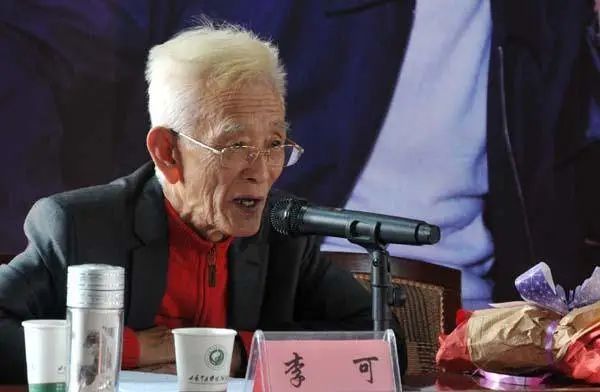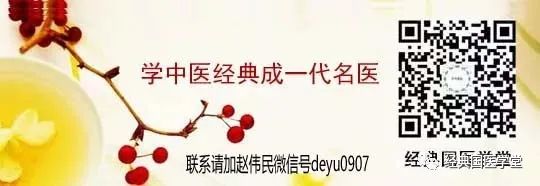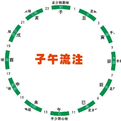 Introduction: The symptoms observed in clinical practice are not always straightforward; they may present illusions. When a condition develops to extremes of cold or heat, there may sometimes appear symptoms or signs that are contrary to their true nature, known as true heat with false cold (真热假寒) and true cold with false heat (真寒假热). Today, we will learn from two case studies how the experienced TCM practitioner Li Ke distinguishes between true and false cold and heat.
Introduction: The symptoms observed in clinical practice are not always straightforward; they may present illusions. When a condition develops to extremes of cold or heat, there may sometimes appear symptoms or signs that are contrary to their true nature, known as true heat with false cold (真热假寒) and true cold with false heat (真寒假热). Today, we will learn from two case studies how the experienced TCM practitioner Li Ke distinguishes between true and false cold and heat.

Renowned cold damage expert Mr. Chen Shenwu once said: “To understand yin and yang is to treat disease; to discern true from false is to be a physician.” This highlights the importance of distinguishing true from false for a physician. Li Ke realized through practice: “Diseases, like people, can be very cunning. What they present is not necessarily their true nature, so one must think deeply and consider the underlying factors to avoid mistakes.” Li Ke believes: “The constitution of individuals varies greatly, and the distinction between true and false is not always clear. Especially in critical conditions, where there is extreme deficiency yet signs of excess, a seemingly robust appearance may actually indicate weakness. A slight misstep can lead to misdiagnosis and mistreatment, determining life or death in an instant. Caution is paramount!” After treating a case of true cold with false heat, he noted: “This condition is indeed perilous; although it was fortuitously cured, I was already drenched in sweat.” This left a deep impression. Thus, he proposed the principle of cautiously distinguishing true and false cold and heat. 1. True heat with false cold, robust appearance with weaknessCase Study: A renowned physician, on December 26, 1964, just two days after the winter solstice, suddenly fell ill with a strange ailment. Initially, the illness seemed like a minor external disturbance, but three days later, he suddenly fell into a coma. His breath was weak, complexion gray and dull, hands cold past the elbows, feet cold past the knees, profuse sweating on the head, consciousness unclear, and the six pulses were faint. A certain physician diagnosed it as “cold damage, with the Shaoyin (少阴) phase losing yang, already in a critical state, and tentatively prescribed Shenfu Decoction (参附汤) to do what could be done.” The hospital director invited Li Ke for a consultation to determine the course of action. Upon examination, the situation was as described. However, the foul air in the room was quite noticeable, which felt suspicious. Moreover, the sudden change in symptoms made the pulse at the cun position chaotic and unreliable. Upon examining the lower three positions of the pulse (足阳, 太溪, 太冲), they were found to be deep, solid, and strong, with a breath count exceeding six. When attempting to observe the tongue, the patient was in a stupor, with tightly clenched jaws, so Li Ke forcefully stimulated the patient’s cheek point (颊车穴) to pry open the mouth. Before he could examine the tongue, a foul odor emanated from the mouth, revealing a thick yellow and dry coating on the tongue, with the center already black. Inquiring about urination, it resembled strong tea and had a foul smell, while the patient had not defecated for five days. Upon palpating the lower abdomen, it was hard and tense, revealing the truth of the matter. It was known that the patient had suffered from opium addiction for over twenty years since the Opium War before the founding of New China, and still relied on camphor tincture to maintain energy, indicating a buildup of toxins in the organs. The illness occurred after the winter solstice, in a body with yin deficiency and fluid depletion, coinciding with the return of yang, where the pathogen transformed into heat and dryness, having shifted from the Taiyang (太阳) to the Yangming (阳明) organ system. The coldness in the limbs was a transformation of deep heat and deep cold; the confusion of consciousness was due to turbid qi obstructing the spirit; the profuse sweating on the head was also due to the organ being full and steaming. All signs indicated a closure of the Yangming organ due to heat, rather than a loss of yang and coldness. Furthermore, true cold conditions would not present with such foul breath. It was noted that the previous physician had not examined the tongue due to the clenched jaws, and the loss of yang and collapse were often seen with a relaxed mouth and closed eyes, while the tightly clenched jaws were unique to solid, heat, and closed conditions. At this point, it could be determined that the previous physician had misdiagnosed. Therefore, a large dose of Da Chengqi Decoction (大承气) combined with Zengye Decoction (增液汤) was urgently prescribed to clear the organ and restore yin, opening the closure without unnecessary additions, and also adding awakening herbs: Rhubarb (大黄) 30g, Mangxiao (芒硝) 20g (to be dissolved separately), Zhi Shi (枳实) 15g, Hou Po (厚朴), Sheng Di (生地), Yuan Shen (元参), and Mai Dong (麦冬) each 30g, decocted and taken in two doses, every three hours. The next day, after taking the medicine just once, the patient had a foul-smelling bowel movement, and after a while, his spirit was clear and he recovered. Upon re-examining the pulse, it remained thin and fine. It was understood that his pulse was a “six yin pulse”; although there were signs of fullness, the pulse did not change, making it difficult to reflect the truth. There is also a type of “six yang pulse” that is always large and solid; although there may be signs of deficiency, the pulse does not change. If one relies solely on pulse diagnosis without further inquiry, how can one accurately diagnose the illness! 2. True cold with false heat, extreme deficiency with signs of excessCase Study: Wu, 57 years old. On December 23, 1979, he suddenly developed sores in the mouth, tongue, and lips, with symptoms that were quite strange and urgent. The onset was at 10 AM, and by 11 AM, his mouth and tongue were in excruciating pain as if burned by fire. In a hurry, he sought treatment from an old friend, who said: “Sores in the mouth and tongue are a minor issue, indicating accumulated heat in the heart and spleen; there is no need to panic.” Without examining the pulse or asking about the illness, he hastily prescribed a combination of Chire San (赤散) and Liangge San (凉膈散). The prescription was very light, with Sheng Di (生地) and Lian Qiao (连翘) 10g each, and the rest 3-5g. The patient took the first decoction at 11:30 AM, and after covering the cup, he immediately felt heat rising from the lower abdomen to his head, with his lips swelling like peaches, and the pain in his tongue worsening, accompanied by restlessness and indescribable discomfort. By around 12:30 PM, his son invited a consultation. Upon examination, the patient’s face was red as if intoxicated, his tongue swollen and blocking his mouth, and he could not articulate his symptoms clearly. The prescription was shown, and his wife reported the changes after taking the medicine. The pulse was large and chaotic, and upon deeper palpation, it felt like a floating thread, 120 beats per minute. Observing the tongue revealed numerous teeth marks along the edges, with white ulcers covering the tips. The lips were swollen and cracked, bleeding. Inquiring about his bowel and bladder movements, the stool was dry, and urination was not noted. There was also no foul odor in the mouth. When asked about the cause of the illness, his wife said: “End-of-year summary, three consecutive nights of staying up late before falling ill.” When asked if he felt thirsty, the patient shook his head. This condition was quite perplexing, and all four diagnostic methods (observation, listening, inquiry, and palpation) yielded no clear understanding. Upon careful examination, it was difficult to overturn the previous physician’s diagnosis. The Inner Canon (《内经》) clearly states: “All pains and sores belong to the heart.” Moreover, acute illnesses are often solid; this illness was sudden and urgent, with a tendency towards toxic sores. Was the previous physician’s treatment too light for a serious condition? While in doubt, the patient suddenly began to toss and turn, appearing restless and indescribably anxious. Upon entering, I noticed his face was red as if painted, and upon closer inspection, it was bright and shiny, resembling an actor with makeup. Suddenly, I realized this was synonymous with the “red face like makeup” seen in the Dai Yang (戴阳) syndrome, which often occurs in critical external conditions, but this case arose from internal injury. Upon palpating the lower limbs, they were indeed cold past the knees. This indicated a long-standing deficiency in the lower source, coinciding with the day of the winter solstice when yang is born, and yin does not support yang, causing the dragon fire to surge uncontrollably. The previous physician mistakenly diagnosed it as excess fire and recklessly used bitter cold herbs, leading to an uncontrollable situation. Urgently, a large dose of Fu Gui Ba Wei Decoction (附桂八味) was prescribed, combined with oil of cinnamon to rescue the medicine from error and harmonize yin and yang: Fu Zi (附子), Shu Di (熟地), Sheng Shan Yao (生山药), and Shan Zhu Yu (山萸肉) each 30g, Yun Ling (云苓) and Ze Xie (泽泻) each 12g, Wu Wei Zi (五味子) 10g, and oil of cinnamon 1.5g (to be dissolved), decocted and taken cold. The patient took the medicine once, and after a quarter of an hour, he peacefully fell asleep. After about two hours, he woke up, and all swelling and pain had disappeared without a trace. Upon re-examination the next day, he still felt a tingling sensation in his mouth, and his tongue was bright red without coating, indicating damage to the yin aspect. The fire had not returned to its origin, and it was not appropriate to use a large dose of Fu Zi to break yin and restore yang, but due to the previous medication error, it had to be used. Although the perilous condition had receded, the yin damage had not yet recovered, so a large dose of Yin Huo Decoction (引火汤) was prescribed, and after two doses, he was cured. In retrospect, this condition was indeed perilous; although it was fortuitously cured, I was already drenched in sweat. 3. Commentary Analyzing Li Ke’s identification of the true and false nature of cold and heat in these two cases, the main confirmations were made through tongue coating, pulse characteristics, and the pulses at the foot yang (趺阳), Tai Xi (太溪), and Tai Chong (太冲) positions. Additionally, both cases noted the onset of illness around the winter solstice, which has significant diagnostic implications for the development of cold and heat, emphasizing the importance of the yin-yang rhythm in distinguishing between them. Li Ke summarized: “Following the rhythms of yin and yang throughout the year and daily cycles, the phenomena of heaven and humanity correspond, such as the emergence of yang after the winter solstice leading to illness, the rise of yang in spring becoming heavy, and the gradual decline of yin after the summer solstice; illnesses arise at sunrise, peak at noon, ease at sunset, and self-resolve at night.”You may also like: Support the author by purchasing a copy of “New Scientific Traditional Chinese Medicine”! It is difficult for folk TCM practitioners to obtain certification, a challenge akin to climbing to the sky! The examination for folk TCM practitioners should be reformed to focus on clinical assessments! Rather than regulating “illegal practice of medicine,” it is better to fully liberalize! For China to achieve universal free healthcare, TCM is essential! Treating cancer with Western medicine is fatal; this is how TCM should treat it!


